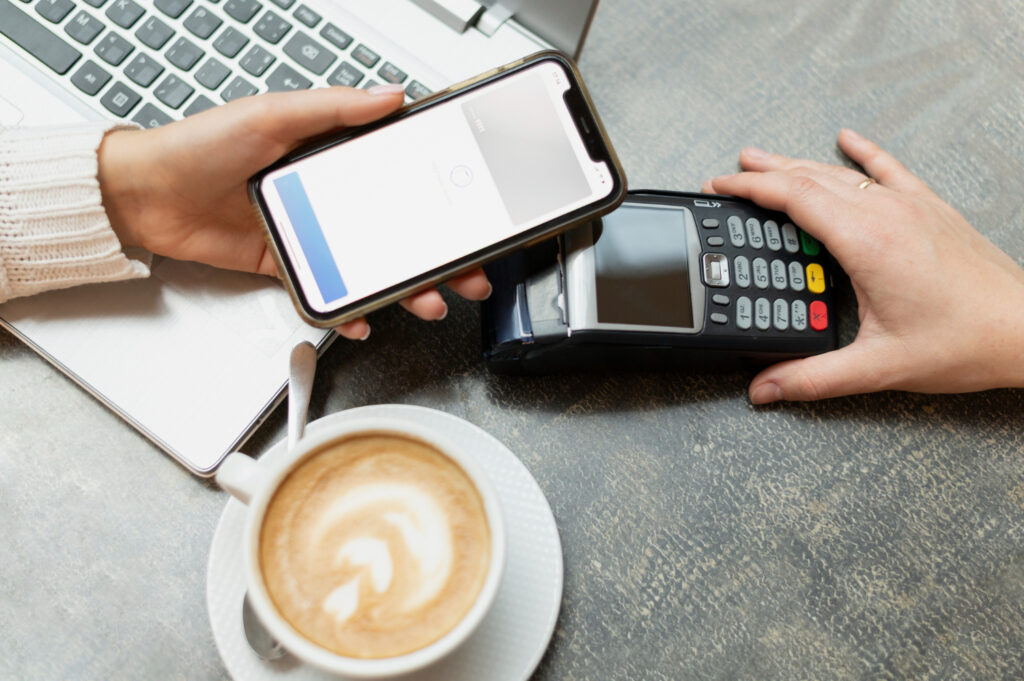
From the convenience of tapping a phone to paying with a smartwatch, contactless payment systems are all about speed, convenience, and security. But have you ever wondered what happens behind the scenes to make this experience as seamless as possible? Enter the world of smart cameras.
Table of Contents
Enhancing the Customer Experience
Imagine walking into a busy store, and despite the rush, everything flows smoothly. No long lines at checkout. No confusion over which self-checkout kiosk to use. This isn’t just good luck – it’s the work of smart cameras quietly managing the flow of customers and payments. Let’s take a look at how using smart cameras makes this happen.
1. Queue Management
AI-enabled smart cameras can monitor lines and send real-time alerts when things start to back up. If a queue at a self-checkout lane or kiosk gets too long, staff are alerted so they can open up another lane or troubleshoot problems. This keeps everything moving smoothly, reducing customer frustration and ensuring a faster payment process.
2. Real-Time Data Analysis
These cameras do more than just watch; they analyze. Smart cameras track the number of customers in the store, the time they spend in line, and even their movements within the space. This data is essential for optimizing staff management and improving the overall customer experience.
3. Facial Recognition and Personalization
In some cases, smart cameras with facial recognition capabilities can even personalize the shopping experience. For example, they can recognize frequent customers, offer tailored promotions, or direct them to less crowded checkout stations. While this technology is still developing, it’s a clear indication of how smart cameras are becoming integrated into the retail environment.
The Role of AI in Contactless Payments
So, what’s AI got to do with all this? Quite a lot, actually. Smart cameras use AI to interpret the data they capture. This means they aren’t just passively recording video – they are actively making sense of what’s happening and responding accordingly.
AI makes these cameras smart in the following ways:
Identifying Wait Times
AI algorithms can be programmed to identify when a customer has been standing in line for too long. This capability helps businesses stay on top of service delays, ensuring quick resolutions before customers get frustrated.
Alerting Staff Automatically
When a problem arises – whether it’s a technical glitch at a payment kiosk or an unusually long line at checkout – AI in smart cameras can notify staff automatically. This reduces the need for constant human monitoring, freeing up staff to focus on other tasks.
Predicting Customer Behavior
Over time, AI can learn patterns. For instance, it can predict peak shopping hours and the likelihood of long queues forming at specific times. With this data, businesses can staff accordingly, minimizing potential slowdowns.
Reducing Friction in the Payment Process
One of the main goals of contactless payment systems is to reduce friction – that is, to make payments as quick and painless as possible. But there’s always the possibility of something going wrong: payment terminals might malfunction, customers may have trouble with their cards, or lines may just grow unexpectedly.
Smart cameras step in to reduce these pain points. With their ability to detect and manage issues in real-time, they keep the contactless payment process running smoothly. Whether it’s alerting staff to intervene or adjusting traffic flow in the store, smart cameras are like the invisible helpers making sure everything stays on track.
Increasing Security and Reducing Fraud
Security is always a top concern when it comes to payments, and smart cameras are playing a vital role in this area as well. These cameras not only assist with queue management and payment optimization but also help detect fraud and theft.
How does this work?
Monitoring Suspicious Behavior
With AI, smart cameras can detect unusual behavior patterns that might indicate fraud, like someone hovering near payment kiosks or making multiple failed payment attempts. Alerts can then be sent to security teams for further investigation.
Ensuring Payment Accuracy
Smart cameras can be used to monitor the actual payment process. They can confirm that a customer scanned all their items correctly in a self-checkout scenario, for example. This reduces the chances of accidental or intentional fraud.
Protecting Sensitive Data
Contactless payments come with their own set of security concerns, such as data interception or hacking attempts. Smart cameras with advanced encryption and secure data transmission methods help ensure that sensitive payment information stays protected.
The Future of Retail with Smart Cameras
Looking ahead, it’s clear that smart cameras are going to become an even more integral part of the contactless payment experience. As AI technology advances, we can expect even more automation, personalization, and security features to emerge.
- Imagine a store where you never have to stand in line – cameras and AI will guide you to the fastest payment option available.
- Or a payment system that instantly recognizes issues and resolves them before you even notice there’s a problem.
- Security protocols will continue to evolve, making it harder for fraudsters to find loopholes in the system.
The future of retail, driven by smart cameras, is one where speed, security, and customer satisfaction are constantly improving.
Wrapping It All Up
Smart cameras are doing much more than you might realize in the contactless payment world. From queue management and real-time data analysis to reducing friction in payments and enhancing security, these cameras are quietly working behind the scenes to make your shopping experience better. As AI technology evolves, so will the role of smart cameras, offering retailers new ways to keep customers happy and businesses secure.
